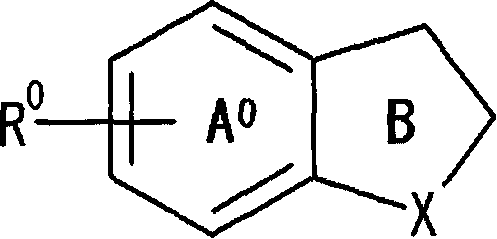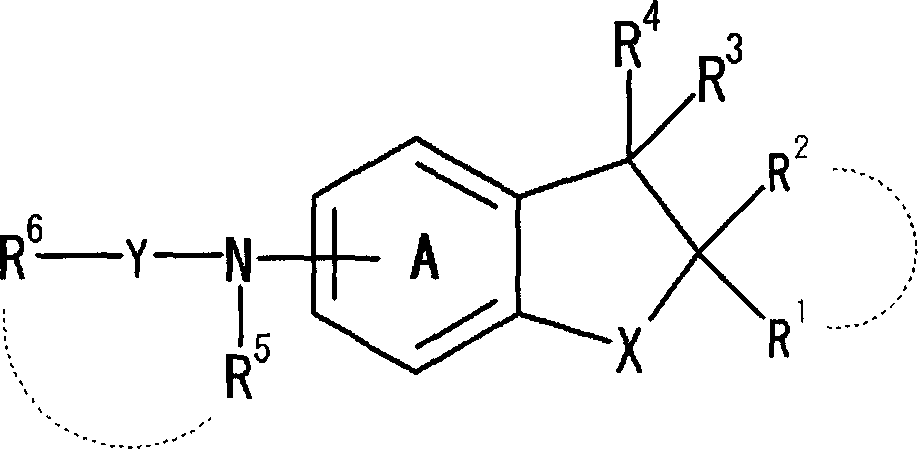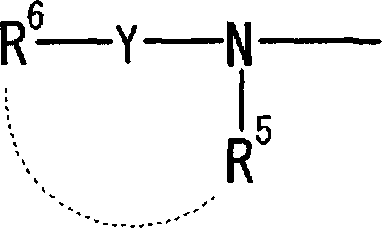Regulator of cannabinoid receptor
A technology of cannabinoid receptors and modulators, applied in antiviral agents, digestive system, metabolic diseases, etc.
- Summary
- Abstract
- Description
- Claims
- Application Information
AI Technical Summary
Problems solved by technology
Method used
Image
Examples
reference example 1
[0686] Hydroxy(4-isopropylphenyl)acetic acid
[0687] To a mixture of lithium chloride (17.0 g, 418 mmol), potassium hydroxide (44.9 g, 800 mmol) and ice (150 g) were added bromoform (17.5 mL, 200 mmol) and 4-isopropylbenzaldehyde ( 30.3 mL, 200 mmol) in 1,4-dioxane (150 mL), and the mixture was stirred at 5-10°C for 24 hours, and then at 35°C for 24 hours. The aqueous layer was acidified with hydrochloric acid and extracted with ethyl acetate. The extract was washed with water and then dried over anhydrous sodium sulfate. The solvent was distilled off under reduced pressure to obtain a residue, which was crystallized from hexane-ethyl acetate to obtain 28.5 g (yield 73%) of the title compound. Melting point: 156-157°C.
[0688] 1 H-NMR (CDCl 3 )δ: 1.24 (6H, d, J = 7.0Hz), 2.91 (1H, septet, J = 7.0Hz), 5.21 (1H, s), 7.24 (2H, d, J = 8.8Hz), 7.36 (2H , d, J = 8.8 Hz), 2H unconfirmed.
reference example 2
[0690] 3-(4-Isopropylphenyl)-4,6,7-trimethyl-1-benzofuran-2(3H)-one
[0691] At room temperature, in the mixture of hydroxy (4-isopropylphenyl) acetic acid (11.8g, 60.8mmol) and 2,3,5-trimethylphenol (12.4g, 91.2mmol) synthesized in Reference Example 1 70% sulfuric acid (10 mL) was added, and the mixture was stirred at 115°C for 12 hr. The mixture was added to water and extracted with diisopropyl ether. The extract was washed with water and saturated sodium bicarbonate solution, and then dried over anhydrous sodium sulfate. The solvent was distilled off under reduced pressure to obtain a residue, which was purified by silica gel column chromatography (hexane:ethyl acetate=8:1) to obtain 10.9 g (yield 65%) of the title compound. Melting point: 107-108°C (hexane-ethyl acetate).
[0692] 1 H-NMR (CDCl 3)δ: 1.22 (6H, d, J = 6.6Hz), 1.93 (3H, s), 2.24 (3H, s), 2.29 (3H, s), 2.88 (1H, septet, J = 6.6Hz), 4.76 (1H, s), 6.76 (1H, s), 7.07 (2H, d, J = 8.1 Hz), 7.17 (2H, d, J = 8....
reference example 3
[0694] 3-(4-isopropylphenyl)-6,7-dimethyl-1-benzofuran-2(3H)-one
[0695] Using hydroxy(4-isopropylphenyl)acetic acid and 2,3-dimethylphenol synthesized in Reference Example 1, the title compound was synthesized in the same manner as in Reference Example 2. Yield 44%. Melting point: 58-60°C (methanol).
[0696] 1 H-NMR (CDCl 3 )δ: 1.22 (6H, d, J = 6.9Hz), 2.27 (3H, s), 2.32 (3H, s), 2.88 (1H, septet, J = 6.6Hz), 4.85 (1H, s), 6.91 (1H, d, J = 7.8 Hz), 6.95 (1H, d, J = 7.8 Hz), 7.13 (2H, d, J = 8.1 Hz), 7.19 (2H, d, J = 8.1 Hz).
PUM
 Login to View More
Login to View More Abstract
Description
Claims
Application Information
 Login to View More
Login to View More - R&D
- Intellectual Property
- Life Sciences
- Materials
- Tech Scout
- Unparalleled Data Quality
- Higher Quality Content
- 60% Fewer Hallucinations
Browse by: Latest US Patents, China's latest patents, Technical Efficacy Thesaurus, Application Domain, Technology Topic, Popular Technical Reports.
© 2025 PatSnap. All rights reserved.Legal|Privacy policy|Modern Slavery Act Transparency Statement|Sitemap|About US| Contact US: help@patsnap.com



